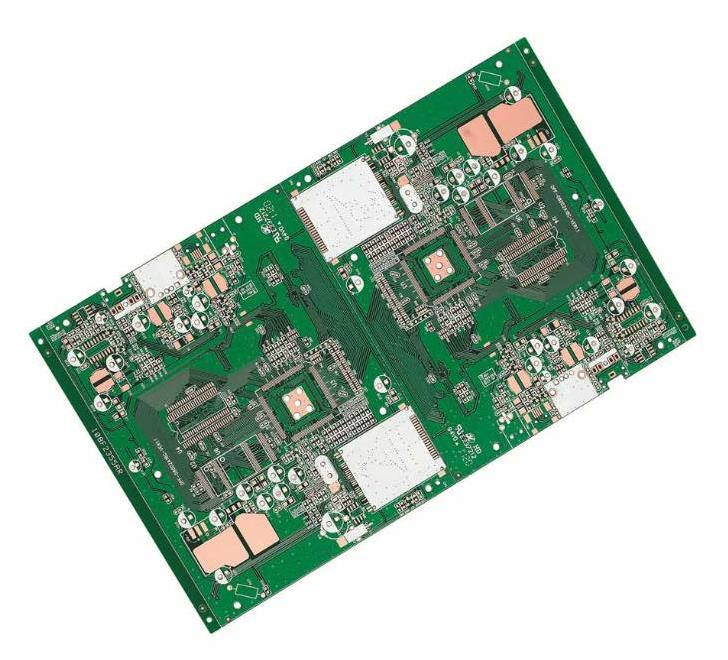Magnetic beads are designed to suppress high-frequency PCB board noise and spike interference on signal lines and power lines, and also have the ability to absorb electrostatic pulses. Magnetic beads are used to absorb ultra-high frequency signals, such as some RF circuits, PLL, oscillator circuits, including ultra-high frequency memory circuits (DDR SDRAM, RAMBUS, etc.) need to add magnetic beads to the power input port, and the inductance is a kind of storage. It is used in LC oscillator circuits, filter circuits of medium and low frequency, etc. Its application frequency range rarely exceeds 50MHZ. The function of magnetic beads is mainly to eliminate the RF noise existing in the transmission line structure (PCB board circuit). The RF energy is The AC sine wave component superimposed on the DC transmission level, the DC component is the desired useful signal, while the radio frequency RF energy is useless electromagnetic interference transmission and radiation (EMI) along the line. To remove this unwanted signal energy, chip beads are used to act as high-frequency resistors (attenuators) that allow DC signals to pass through while filtering out AC signals. Usually, high-frequency signals are above 30MHz, however, low-frequency signals are also affected by chip beads.

The chip magnetic bead is composed of soft ferrite material, which constitutes a monolithic structure with high volume resistivity. Eddy current losses are inversely proportional to the resistivity of the ferrite material. Eddy current losses are proportional to the square of the signal frequency. Benefits of Using Chip Beads: Miniaturization and Lightweight High impedance in the RF noise frequency range, eliminating EMI in transmission lines. Closed magnetic circuit structure to better eliminate signal cross-winding. Excellent magnetic shielding structure. Reduce the DC resistance to avoid excessive attenuation of the useful signal. Remarkable high-frequency characteristics and impedance characteristics (better removal of RF energy), eliminating parasitic oscillations in high-frequency amplifier circuits. Effective operation is in the frequency range of a few MHz to several hundred MHz.
To select the magnetic beads correctly, the following points must be paid attention to:
1. What is the frequency range of the unwanted signal;
2. Who is the noise source?
3. How much noise attenuation is required;
4. What are the environmental conditions (temperature, DC voltage, structural strength);
5. What is the circuit and load impedance;
6. Whether there is space to place magnetic beads on the PCB board.
The first three can be judged by observing the impedance frequency curve provided by the manufacturer. All three curves are very important in the impedance curve, namely resistance, inductive reactance, and total impedance. The total impedance is described by ZR22πfL()2+:=fL. From this curve, choose a bead model that has impedance in the frequency range where you want to attenuate noise and minimize signal attenuation at low frequencies and DC. The impedance characteristics of chip magnetic beads will be affected when the DC voltage is too large. In addition, if the working temperature is too high, or the external magnetic field is too large, the impedance of the magnetic beads will be adversely affected.
Reasons for using chip beads and chip inductors: Whether to use chip beads or chip inductors mainly depends on the application. Chip inductors are required in resonant circuits. When it is necessary to eliminate unwanted EMI noise, the use of chip beads is the choice. Applications of chip beads and chip inductors:
Chip inductors: Radiofrequency (RF) and wireless communications, information technology equipment, radar detectors, automotive electronics, cellular phones, pagers, audio equipment, PDAs (personal digital assistants), wireless remote control systems, and low-voltage power supply modules.
Chip beads: clock generation circuits, filtering between analog and digital circuits, I/O input/output internal connectors (such as serial ports, parallel ports, keyboards, mice, long-distance telecommunications, local area networks), radio frequency (RF) circuits Between interference-prone logic devices, filtering of high-frequency conducted interference in power supply circuits, EMI noise suppression in computers, printers, video recorders (VCRs), television systems and mobile phones on PCB board.